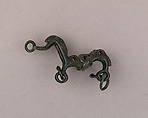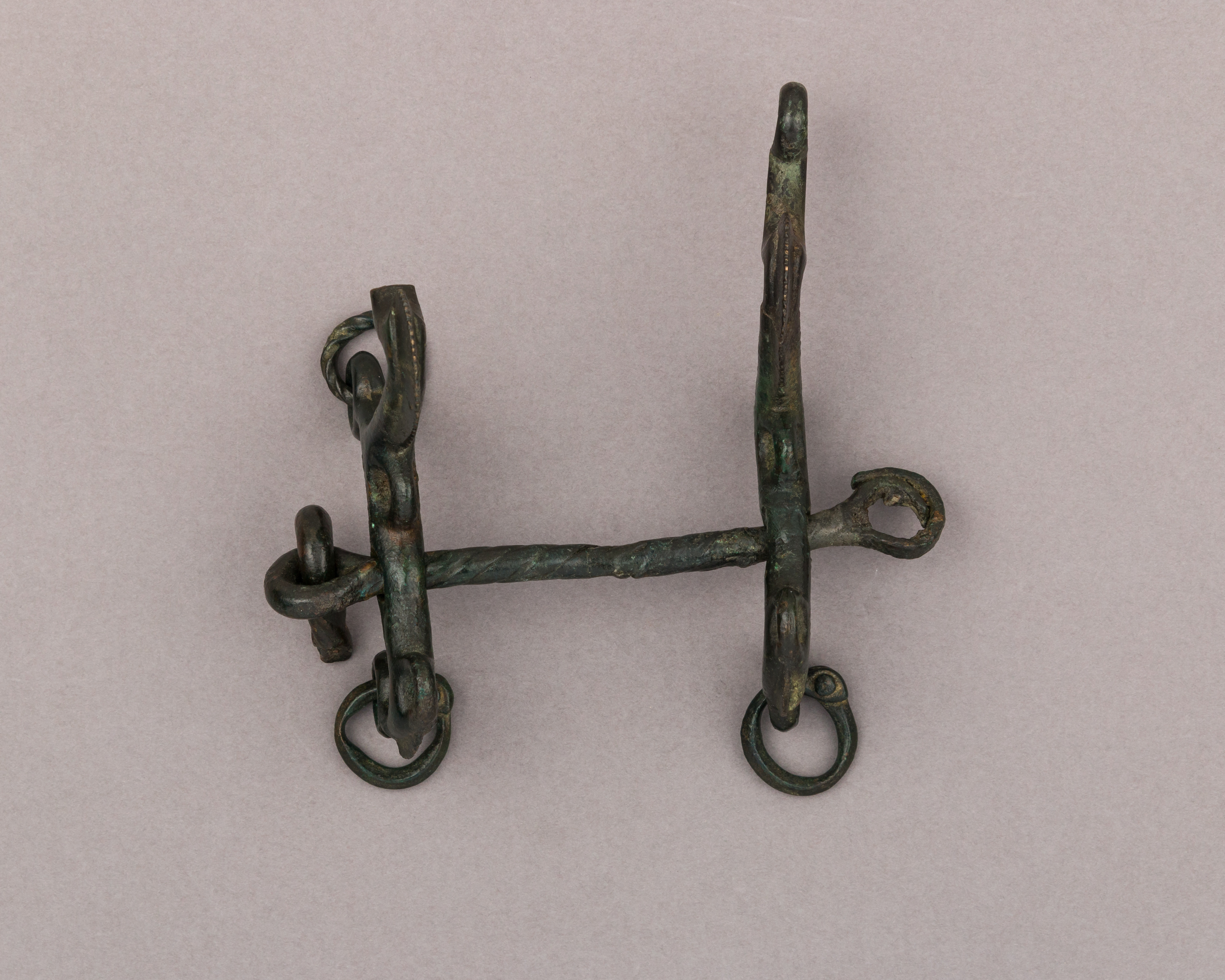Snaffle Bit
The snaffle bit is the simplest type of horse bit, and has an effect on the bars (part of the horses’ jaw without teeth) and the corners of the lips. The mouthpiece of this bit consists of a single twisted bar terminating in two eyelets, one still holding a fragment of the link for holding the reins. On each side, the mouthpiece passes through a cheekpiece shaped as a horse, featured with two rings on their back for attaching the bit to the bridle. Eyelets on their hooves and noses were used for hanging long decorative pendants, of which a few rings remain.
This type of bit was inspired from contemporary Near Eastern examples, found in the Luristan region (Iran), and often featuring animals on their sides.
Horses had a great value among Villanovan and Etruscan societies. They were used for military and leisure purposes, and possessing them was an indicator of high social status. Equestrian objects, like bridles or even chariots, were often deposited in the tombs of the wealthy individuals, the deceased hoping to equip their steeds in the afterlife. Horses are also widely present among the paintings, ceramics and other decorated objects found in the same burials.
Due to rights restrictions, this image cannot be enlarged, viewed at full screen, or downloaded.
This artwork is meant to be viewed from right to left. Scroll left to view more.



